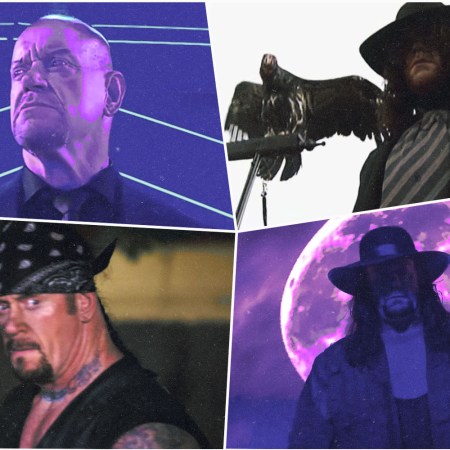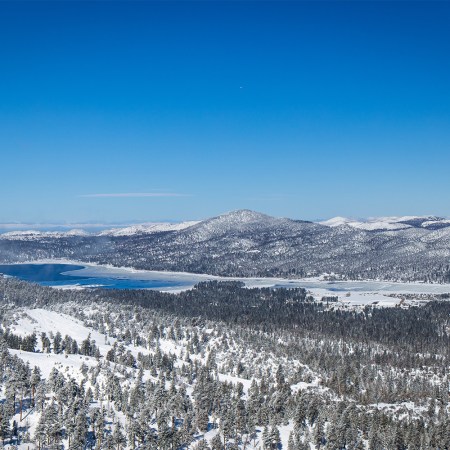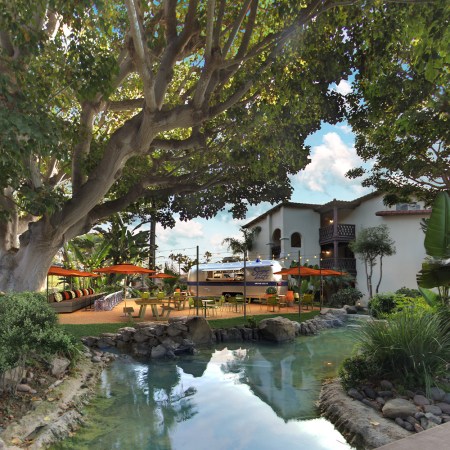The Sunset Strip is famous as a haven and a hangout for rock bands like Led Zeppelin, the Rolling Stones and the Doors during the 1960s. That countercultural era, though, obscures another, mostly unrecorded history — rife with illegal gambling, casinos and a whole world of illicit nightlife, all run by gangsters.
One of the only people researching the Sunset Strip’s connection to illegal gambling is local historian Jon Ponder, a co-founder, researcher and producer for the West Hollywood History Center, a nonprofit that collects and preserves as much information as possible about the neighborhood; he’s also worked as a producer for publications like Variety and created the podcast series “Hollywood and Crime.” Most recently reclaimed by a string of new luxury hotels, some properties of the Strip have sought to revitalize the rock and roll era, but Ponder suggests revisiting the lesser-known industry of gambling might end up as the better bet for the city.
“Nobody around here is aware of the impact that gambling had in the ’30s, ’40s and ’50s,” Ponder said during a recent interview at Hugo’s on Santa Monica Boulevard. “The Strip is there because it was the main connector between Beverly Hills, where the movie stars and moguls lived, and Hollywood, which in those days is where all the filmmaking was. These wealthy people had to go up and down this particular stretch of road every day. For jurisdiction reasons, that slice was never incorporated into either Beverly Hills or Los Angeles.” It was an unincorporated piece of the county surrounded on all sides by the city of L.A., but outside the laws and ordinances passed by it.
This loophole meant that as the farmland around the road gradually transformed into large homes, mansions and, later, roadhouses designed for commercial use, when the roadhouses became speakeasies, it wasn’t too big of a stretch to add gambling as well.
“The operative dates are about 1930 until the early 1950s, when it went away,” Ponder said. “A lot of places that had backroom gambling might’ve had card games, or maybe a craps table, but there was a full-on casino hidden behind mirrored doors at the Clover Club, which was located at 8477 Sunset. They had movie people going in there during the height of the Depression dropping $10,000 a night, which is probably around $100,000 today. There was a gambling raid there in 1930, and it was called the Sphinx Club then.”
Remembering the Glam-Rock Bars of the Sunset Strip in the 1980s
What’s next for the place Vince Neil called a “cesspool of depravity?”As the Strip began to solidify as a place where nightlife, gambling and movie stars congregated, the founder of The Hollywood Reporter, Billy Wilkerson, got in on the action. Ponder and other historians describe Wilkerson as a “degenerate gambler” — what we would now simply call a gambling addict — who would sometimes gamble the entire payroll of The Hollywood Reporter when he was out placing bets. Wilkerson is responsible for getting more stars out on the Strip, covering their appearances at parties in the paper, and making money off both their appearances and the increased gambling that the presence of the movie stars brought to these establishments. He even opened his own spot, taking over the lease at Cafe La Boheme on the Strip, and using his publication to create a new lifecycle for coverage of celebrity appearances at his club.
“There would be a private room in the back, and that’s where there were high-stakes card games,” Ponder said. “It was the head of 20th Century Fox, and the big guys at MGM, and all those guys were all gambling together. Even the wealthy actors couldn’t really afford these stakes. This was a model for all the gambling that was happening on the Strip: People across the country were paying their quarter to see the movies, the money was coming to Hollywood and being paid out in buckets to these moguls, and they were losing it to the mobsters on the Strip.”
The mob, who already controlled casinos on the East Coast, started getting more involved with gambling on the West Coast, which led to turf wars and increased violence — so much so that the sheriffs who had mostly looked the other way when it came to activities on the Strip had to finally step in.
“After a big crackdown on vice on the Strip starting in 1949, the gambling moved to other parts of Los Angeles and to the legal casinos in Las Vegas,” Ponder said. “The Strip has never really recovered from the loss of the downstream benefit of all the gamblers’ free-wheeling big spending to local businesses and workers.”
It seemed clear that the era of gambling and vice was over on the Strip, and that’s when the musical era began. But even after that activity came to a halt, a shadow of its presence remained, helping the area brand itself. “By the late 1950s and early ’60s, the Strip was in a transitional state,” Ponder explained. “Its biggest asset then was its name — its brand. In 1964, the Whisky a Go Go opened up and many other rock clubs came soon after. In a few short years, the Strip had been reinvented: The former gamblers’ haven had become one of the top rock and roll venues in the world.”
In that way, the impact that the era of glamor and gambling had on the history of this stretch of road is part of why musicians flocked to it in later decades. But in Ponder’s mind, if the area is going to return to an era of elegance and celebrity, having some upscale entertainment available too would only be a good thing. All the hotel openings are one thing, but in-town residents and out-of-town guests alike need activities and amusement. Potentially bringing back gambling to this area could return it to the popularity of the ’30s and ’40s, and infuse the city with cash that comes from the popularity of casino culture.
“The Strip has two reputations,” Ponder said. “Most people think of the rock and roll era. But it wouldn’t have been famous then if it hadn’t been for the glamor and gambling era. It was already branded in the public mind. The developers on the Strip have decided they’re going for glamor, and the intention of them is really upscale. Well, you can make gambling really upscale. There’s a lot of upsides, and I don’t really see a downside.”
This article was featured in the InsideHook newsletter. Sign up now.























